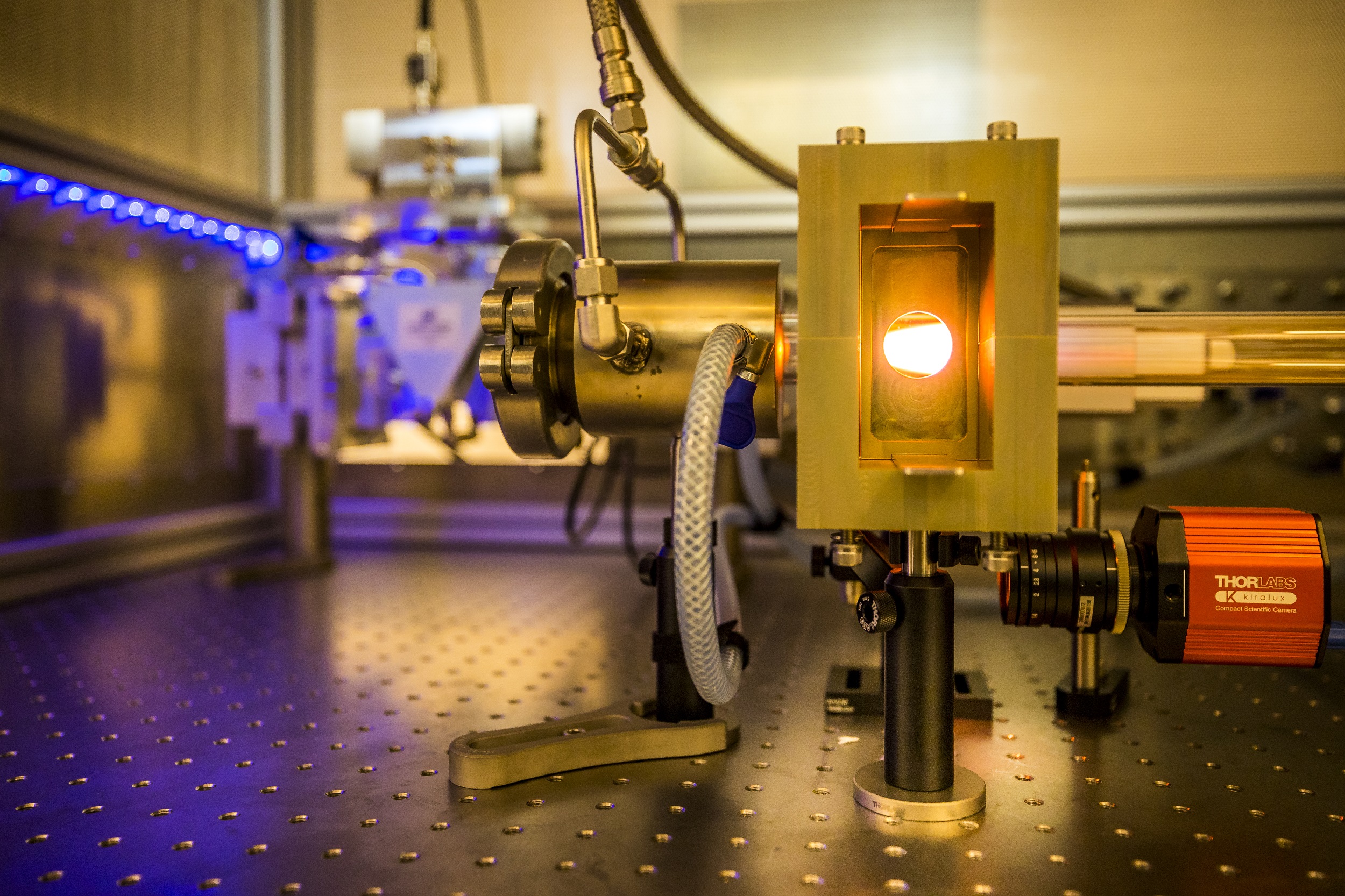
Hopeful words were flung into the world during the launch of the plasma lab on Thursday at the Brightlands Chemelot Campus. “Plasma is a game-changer,” said the company. “We believe in plasma.” “This is huge.” And Gerard van Rooij, professor of Plasma Chemistry at Maastricht University as well as head of the new Plasma Lab, expressed hope that a significant contribution can be made to “saving the planet” from the perspective of the economy as well.

The petrochemical industry must also divest itself of fossil fuels. Making it all more sustainable primarily means that a large part of the processes and systems at Chemelot must be powered by sustainable electricity by 2050. Plasma is a promising alternative to gas for achieving the high temperatures that are needed for chemical processes.
Clean flames
Plasma technology is one option for accomplishing this. The flames that are still used to reach temperatures of up to 5,000 degrees Celcius – which are necessary for chemical processes – will soon be fueled by electricity and not by gas or other fossil fuels. By “the flame that doesn’t burn,” as the new slogan goes. And consequently does not produce any greenhouse gases. Not that electricity is squeaky clean. But Gerard van Rooij compared it to the electric car: you do need electricity but the emissions from the vehicle itself have already been eliminated. “In a way, it’s a cheap technology. If you have electricity, you have plasma.” Although he hastened to add that this was not a whim of a few men on a Wednesday afternoon but was preceded by years and years of research.
Knowledge center Brightsite, a public-private partnership between Brightlands Chemelot Campus, Maastricht University, the Netherlands Organisation for Applied Scientific Research (TNO) and Sitech Services, focuses on making the chemical industry more sustainable with a view to achieving the Paris climate targets. Small quantities of plasma can already be produced in the new lab. The intention is to scale up, optimize the existing technology and develop new plasma processes. This will make it possible to electrify chemical processes with (green) electricity and to produce hydrogen and raw materials for the chemical industry without CO2 emissions.
Read more about Brightlands here
High temperature heating with natural gas is being replaced in the lab by a green, electric plasma flame, whereby CO2-free hydrogen is produced. Hydrogen is an important green energy source for fertilizer production. Along with hydrogen, this process creates green raw materials that can be used in the production of plastics.
Green electricity
Arnold Stokking, managing director of Brightsite: “Plasma technology has a great future within the chemical industry. As far as we are concerned it is the new process technology for splitting and reforming molecules on the basis of green electricity. This technology will play a major role in the students’ ability to directly apply what they learn in lecture halls in experiments carried out in the plasma lab. The Brightsite Plasma Lab will be home to both fundamental research and applied research. Interested companies will also be able to join various academic and industrial programs. The plasma lab is expected to attract new parties to the campus.”
Lab boss Gerard van Rooij refrained from making any statements about concrete results. It will be a long time before all factories at Chemelot will be running on plasma. “But we do have until 2050,” he adds.
What is plasma technology?
Plasma is also called the fourth state of aggregation, in addition to the others of solid, liquid and gas. When a gas is brought into a powerful enough electric field, a state is created in which gas particles become ionized. This ionized gas is composed of gas molecules and reactive particles such as ions, electrons and radicals. This combination of reactive particles makes (new) chemical reactions possible. In the heart of this electric flame, the heart of the plasma cloud, the temperature is extremely high. Molecules can be split and formed very quickly under these conditions. And because a plasma is generated with electrical energy, the process is highly sustainable when green electricity is used.

